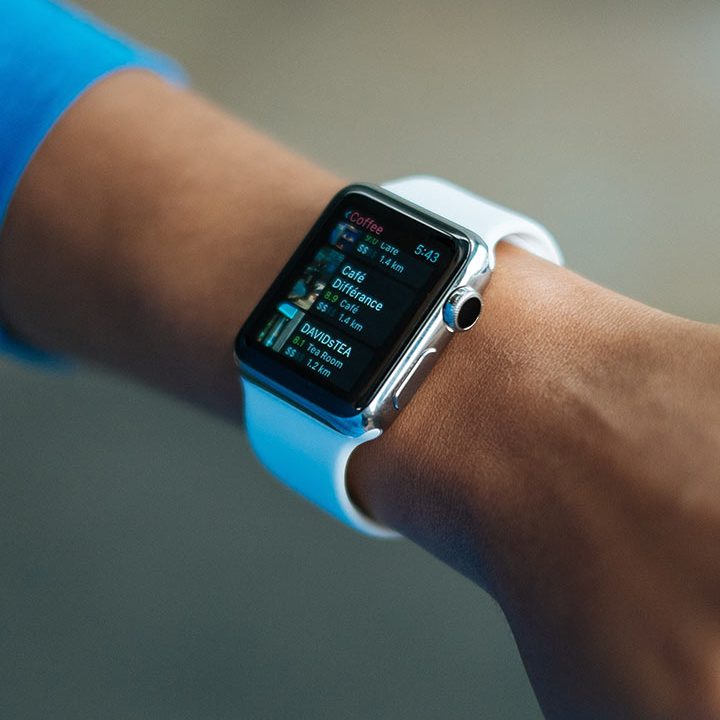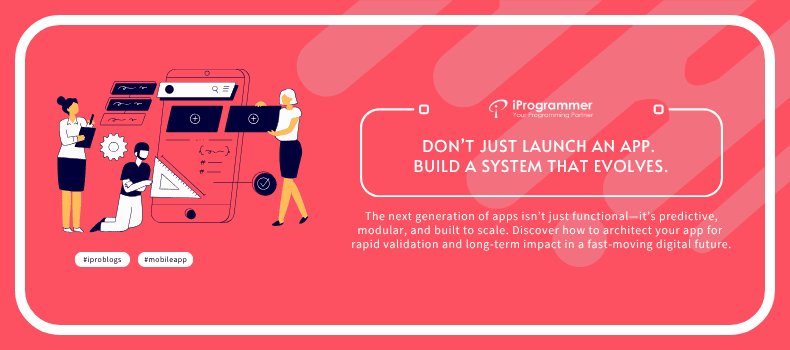Planning Your First Mobile App? Here’s How to Make It Future-Proof for Sustainable Growth
When it comes to mobile app development, there’s a silent tension that every product head or founder ultimately faces: Do we launch quick, or do we launch perfect? On the one side, a quick-to-market app approach offers early feedback, validation, and possible traction. On the other, an app with a lot of features suggests long-term value, differentiation, and user delight. But currently—where product expectations become more precise and attention spans shorter—the trade-off doesn’t feel so easy.
The right approach often blends both. The most scalable and durable apps aren’t the ones that are most refined on day one—they’re the ones who mapped out their growth path with rigor. This blog discusses how early-stage teams can think about app launch planning as not a sprint, but as a series of mindful choices that maximize both pace and substance.
Why Speed Still Matters
For early-stage teams, especially those operating without infinite capital, speed has strategic value. A fast-to-market app strategy reduces time in the idea-validation loop. It allows founders to test real usage patterns, uncover friction points, and build trust with early adopters—all before investing heavily in features that may never be used.
A streamlined, scalable MVP (minimum viable product) helps you answer questions that no focus group or deck can: Will users complete the onboarding? Do they use the feature you thought was core? Are they willing to pay?
But here’s the caveat: speed is only useful when paired with direction. Launching quickly without clarity on what you’re measuring—or why—can lead to misleading signals. You’re not just building an app; you’re designing a validation loop. What you learn in those first few weeks should directly inform your next build cycle.
On the opposite end, teams often chase “completeness” in early versions—out of pride, anxiety, or a desire to impress. It’s understandable. No one wants to launch something that feels half-baked.
But feature-rich apps that debut before proper validation carry a heavy burden. Every feature you release becomes a feature you must maintain, monitor, and defend. Worse, it muddies early insights: when ten things are happening in your app, it’s harder to know what’s working.
In 2025, users are no longer patient with complexity. A cluttered experience signals a lack of focus. You’re not just competing with similar apps—you’re competing with the user’s phone habits. If your app doesn’t earn its place in the first few sessions, retention suffers.
Being thorough is not the same as being complete. Completeness early on is the ability to provide a clean, laser-like experience that fixes one genuine issue better than everyone else.
The Middle Path: Intentional Phasing
The solution to this dilemma isn’t between fast or full—it’s phasing your vision. Many startups that scale successfully tackle mobile app development in phases:
Phase 1: Problem-Solution Fit
- What is that single job this app has to perform exceptionally well?
- What is the bare minimum set of features to prove that?
Phase 2: User Retention Insights
- How are users acting in real time?
- Which features contribute to stickiness or churn?
Phase 3: Strategic Layering
- Now that there’s signal, what features map to monetization, differentiation, or virality?
This staged approach enables teams to go fast, but not randomly. Each build cycle is tied to an actual learning objective—not a wish-list.
What Often Goes Wrong (That Doesn’t Get Talked About)
Many product teams usually fall into the following traps in the early stages of development:
- Confusing stakeholders with users: Investors’ or partners’ requested features tend to take precedence over what real users require. This causes overweighted early builds.
- Skipping instrumentation: Apps are launched without the right analytics, making early user behaviour hard to interpret—and future changes hard to justify.
- Letting tech drive scope: Because a framework or backend can support complex logic, teams feel compelled to use it fully—even when it adds no immediate value.
- Delaying monetization too long: By the time you think about pricing or usage limits, habits have formed. Early experiments around willingness to pay are often more informative than polished pricing models.
These aren’t technical issues—they’re planning issues. The common thread is a lack of strategic prioritization early on.
By the time an app reaches version 1.5 or 2.0, a pattern begins to emerge.
- Start with a strong narrative around their core value.
- Release early but learn rigorously.
- Phase features from actual user feedback and strategic objectives.
- Balance UX simplicity with backend readiness for growth.
- Align business and product decisions from day one.
- Launch with too many half-used features.
- Mistake activity for progress—lots of builds, minimal understanding.
- Add complexity instead of iterating on what users already love.
- Struggle to shift from MVP to monetization because user behaviour wasn’t tracked early on.
The mobile landscape is different now. Some shifts that matter:
- User expectations have normalized across categories. Whether you’re a fitness tracker or a B2B dashboard, your UX is being silently compared to the best apps people use daily.
- OS-level privacy changes mean you can no longer rely on deep analytics post-launch unless you plan for it from the start.
- AI-driven onboarding, personalization, and feature suggestions are becoming table stakes. But adding AI too early—prior to grasping the context of the user—introduces noise.
- Market saturation means novelty is not enough. Your responsiveness and clarity of purpose to actual user behaviour are more important than graphic finish or extensive roadmaps.
If you recognize these shifts early can make sharper decisions, especially in those critical early months.
How to Find Your Balance: Practical Considerations
When planning your mobile app, ask yourself:
- What is the absolute minimum feature set that delivers our core promise?
- How will we measure early usage meaningfully?
- Which technical decisions today allow us to scale or pivot tomorrow?
- Are we building for early traction, long-term defensibility—or both?
- How will we respond to user data in the first 30 days post-launch?
This doesn’t mean doing the bare minimum. It means doing the right minimum—with care.
Developing a mobile app in 2025 is no longer a question of speed vs. substance. It’s about recognizing the value sequence.
The objective is not simply to reach market or wow with a feature laundry list—it’s to win sustained use, build trust, and remain relevant. That requires restraint, planning, and a feedback-driven mindset.
The right app launch strategy isn’t defined by how much you build—it’s defined by when and why you build each piece.
Why Teams Work with iProgrammer for Mobile App Development
Striking the right balance between speed and depth isn’t just a launch decision—it’s a development philosophy. At iProgrammer, we assist early-stage teams and mature businesses in making those trade-offs with transparency and confidence.
Over our 15+ years building mobile apps for clients like Vodafone Idea and Praj Industries, we’ve honed a process that prevents common pitfalls and ensures measurable growth. 300+ apps launched, and over 128 million end users reached, we know what it takes to bring a product to market fast—without sacrificing scalability, performance, or future vision.
Our mobile app development process is engineered to bend around your objectives:
- Discovery & Strategy: We collaborate closely with you to establish what most matters—whether it’s initial validation, technical substance, or readiness for the future.
- Design & Prototyping: From wireframes to functional models, we focus on usability and flow to reduce rework later.
- Build & Test: We develop high-quality apps using Swift, Kotlin, React Native, Flutter, and beyond—always striving toward your release targets and technical strategy.
- Launch & Iterate: From delivering an MVP to growing in scale, we support your app with frequent updates, performance improvement, and roadmap optimization.
From Android and iOS to cloud, hybrid, and PWA solutions, our 350+ member organization offers rich experience across platforms and industries. Moreover, we also assist you in determining what to create first, and what to create next.
If you’re planning a mobile app and want to move fast—but smart—we’re here to help you launch with confidence, scale with purpose, and build what truly lasts.
Contact iProgrammer to get started.









